Introduction of mullite
Mullite is a high-temperature resistant mineral with aluminum silicate as its main component. Its chemical formula is 3Al₂O₃・2SiO₂, and the aluminum-silicon ratio is about 3:2. It has characteristics of excellent high temperature resistance, strong acid resistance, high insulation and high bending hardness. In this article, we will focus on the application and grinding &classifying equipment of mullite.
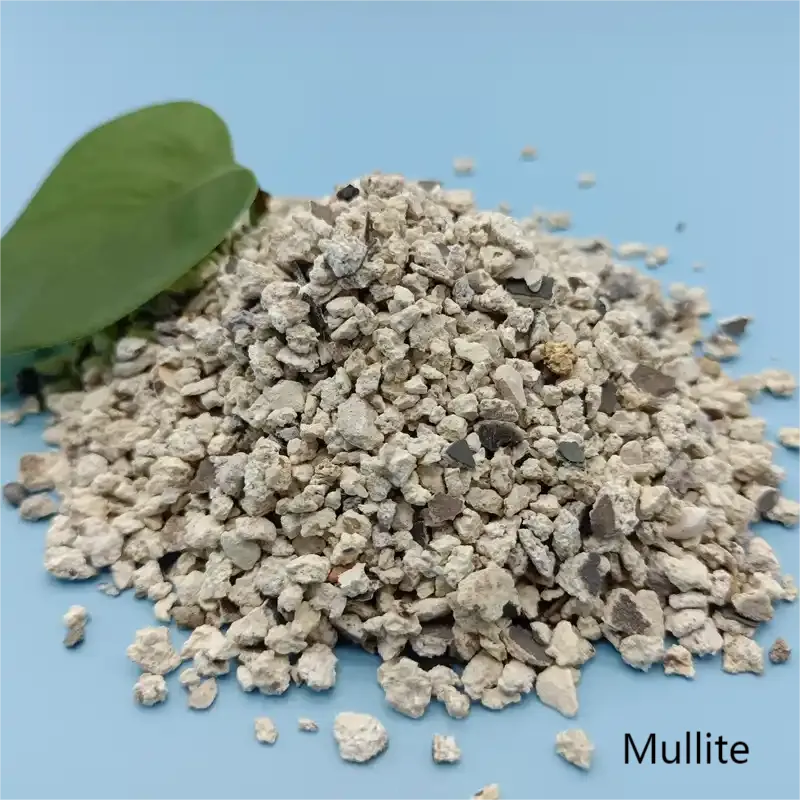
Application of mullite
① Refractory materials
Lining materials for high temperature kilns, glass melting furnaces, and ceramic sintering furnaces.
② Electronics and optics
High-frequency insulating substrates (such as 5G communication devices), laser window materials, LED heat dissipation substrates, etc., to meet the needs of high insulation and low expansion.
③ Aerospace
Jet engine turbine blade coatings, spacecraft re-entry thermal insulation tiles, rocket fairings, and radomes.
④ Environmental Protection
Catalyst carriers for coal-fired power plants (such as denitrification catalysts), and heavy metal adsorbents in wastewater.
⑤ Precision Ceramics
Preparation of structural ceramic components (such as high temperature sensors, cutting tools).
⑥ New energy field
Used as diaphragm or electrode material in fuel cells and lithium-ion batteries.
Grinding and classification of mullite
· Grinding
The grinding of mullite needs to select equipment and process according to application requirements, focusing on particle size control, impurity contamination and dispersibility.
— Ball mill
Ball mill is the traditional main equipment for mullite grinding. It has irreplaceable advantages in grinding mullite, especially in the preparation of medium-coarse particle size (10~100 μm) and large-scale production. The lining chooses ceramic lining or steel lining, and the grinding media chooses alumina balls or silicon carbide balls, to avoid iron pollution. Products can be used for refractory aggregates.
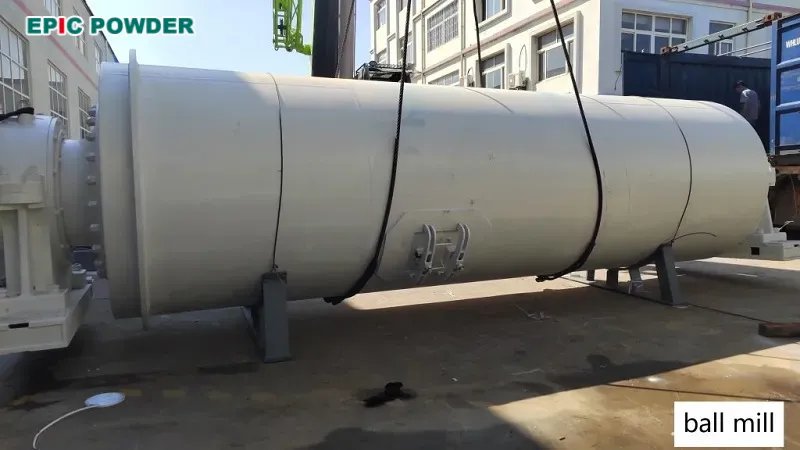
— Jet mill
Jet mill is the core equipment for processing mullite ultra-fine powder. It is suitable for high-end applications with particle size requirements of 1~10 μm (such as electronic substrates, precision ceramics, catalyst carriers, etc.).
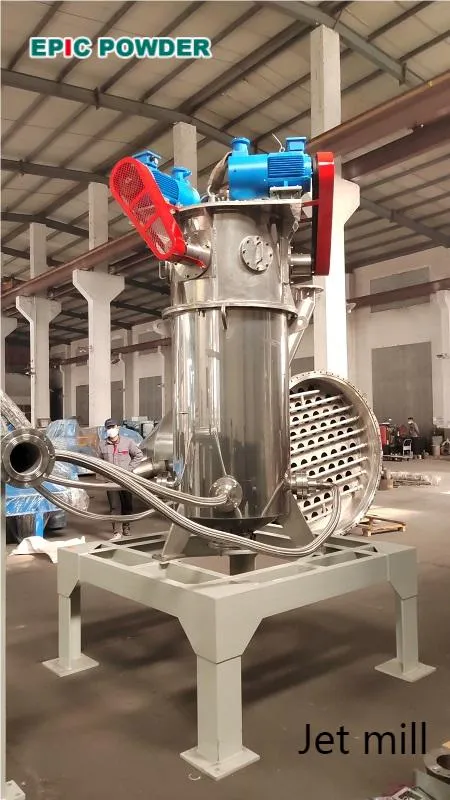
Take an example: one of our clients who makes new energy materials, they adopted our fluidized bed jet mill to grind mullite to D90: 2.5 μm for lithium battery coating.
· Classification
— Air classifier
Air classifier is the core equipment for achieving precise control of particle size in mullite grinding. It plays a key role in the post-processing stage of ball mill or jet mill.
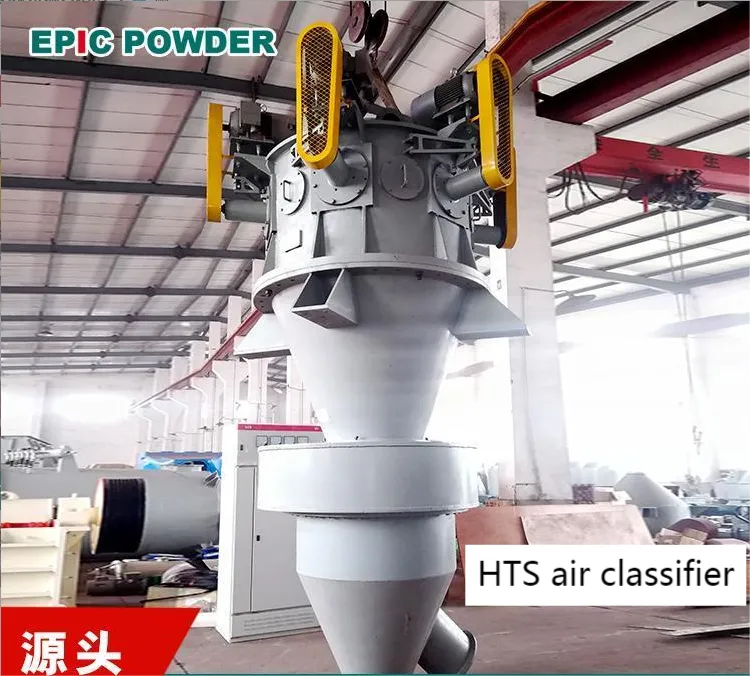
Mainstream model: turbine classifier
Core components:
Classifying wheel: made of wear-resistant alloy or ceramic coating.
Guide blade: optimize air flow distribution and reduce energy consumption.
Separate mullite powders of different particle sizes to improve product uniformity. By combining turbo classifier with ball mill can achieve precise classification of mullite powder, eg: D50: 15 μm. At the same time, a bag filter or cyclone dust removal system is required to control dust emissions (≤10 mg/m³).
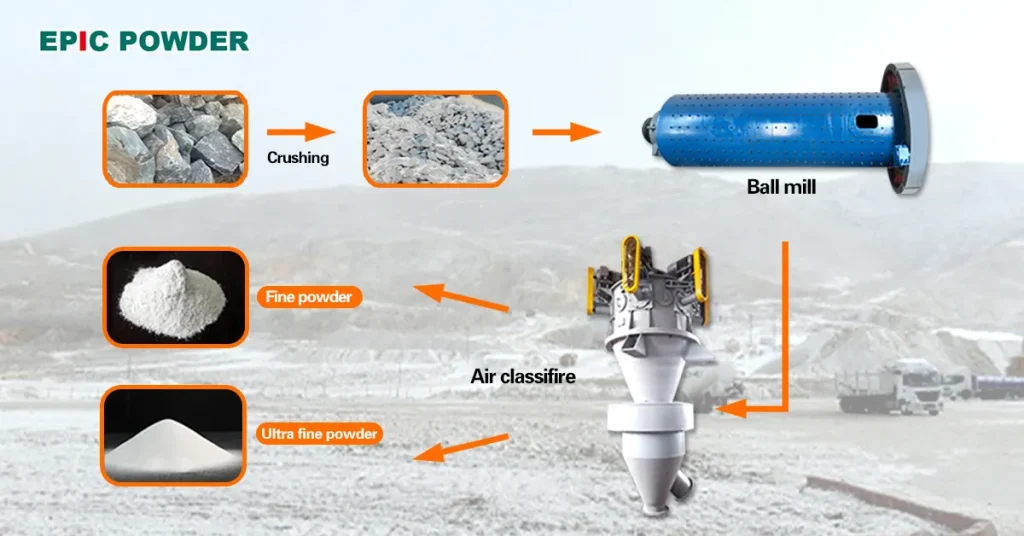
Qingdao Epic Powder Machinery Co., Ltd is a powder processing equipment manufacturer with rich experience and technical accumulation. Our products include grinding equipment, classifying equipment, modification equipment and related auxiliary equipment. If you need related equipment to process mullite or other materials, please contact our staff directly, and we will provide you with a one-stop solution from equipment selection, solution design to installation and commissioning, and after-sales service.
Summary
In recent years, mullite has expanded from traditional refractory materials to electronics, aerospace and new energy due to its dual advantages of “high temperature resistance + environmental protection”. In the future, through solid waste resource utilization and low-carbon processes to reduce costs, the potential of mullite in strategic emerging industries will be further tapped.
